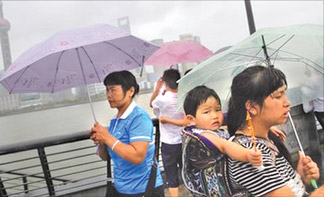|
Breaking out of the hard-news format:
Real features of feature writing
Gaston De ROSAYRO
|

A trend story could be a cool new look in fashions, a website or
tech gadget that everyone is going nuts over.
|
Journalism isn’t just about straight news stories with short leads
that get right to the point. News writing is great, but for those who
love words and the craft of writing, there is nothing like producing a
splendid feature story.
Hard-news stories are typically an assemblage of facts. Some are
better-written than others, but they all exist to fulfill a simple
purpose – to convey information. Feature stories, on the other hand, aim
to do much more. They convey facts, yes, but they also tell the stories
of people’s lives. To do that, they must incorporate facets of writing
often not found in news stories, ones that are often associated with
fiction writing, including description, a greater use of quotes,
anecdotes and sometimes extensive background information.
Feature writing breaks out of the hard-news format and allows the
creative types among us to tell stories in a more artistic and
compelling way. Ask most people what a feature story is, and they will
say it is something soft and puffy, written for the arts or fashion
section of the newspaper. But in fact, features can be about any
subject, from the fluffiest lifestyle piece to the toughest
investigative report. And features aren’t just found in the back pages
of the paper, the ones that focus on subjects such as home decor and
music reviews. In fact, features are found in every section of the
paper, from news to business to sports.
A feature lead does not have to have the ‘who, what, where, when and
why’ in the very first paragraph, the way a hard-news lead does.
Instead, a feature lead can use description or an anecdote to set up the
story. And a feature lead can run for several paragraphs instead of just
one.
Feature stories often employ a more leisurely pace than news stories.
Features take time to tell a story, instead of rushing through it the
way news stories often seem to do. Taking more time to tell a story
means using more space, which is why features are usually, though not
always, longer than hard news articles. If news stories tend to focus on
events, then features tend to focus more on people. Features are
designed to bring the human element into the picture, which is why many
editors call features ‘people stories.’
So if a hard news story recounts how 1,000 people are being laid off
from a local factory, a feature story might focus on just one of those
workers, portraying their grief at losing their job. With features, the
position is entirely different from the hard news. Features are founded
on ideas (news is founded on events), and no-one has a monopoly on
ideas. Much of the extra editorial space is filled by features.
|

Spot features are feature stories produced on deadline that
focus on a breaking news event. A feature on typhoon Muifa is
such. |
So we now know what features are not. But what are they? Feature
stories are not defined so much by subject matter as they are by the
style in which they are written. In other words, anything written in a
feature-orientated way is a feature story. These are the characteristics
that distinguish feature stories from hard news. We have already defined
what feature stories are, outlined the components of features and
discussed how to write a feature lead. But just as there are different
kinds of hard-news stories, there are lots of different kinds of
features. Here are some of the main types.
There is what is called a profile. A profile is an article about an
individual, and is one of the staples of feature writing. No doubt you
have read profiles in newspapers or magazines. Reporters do them on
politicians, tycoons, celebrities and athletes among others. Profiles
can be done on just about anyone who is interesting and newsworthy,
whether it is on a local, national or international level.
The idea of the profile is to give readers a behind-the-scenes look
at what a person is really like, warts and all, away from their public
persona. Profile articles generally provide background on the profile
subject - their age, where they grew up and were educated, where they
live now, whether they are they married or have children among other
insights.
Beyond such factual basics, profiles look at who and what influenced
them. If you are doing a profile you will obviously need to interview
your subject, in person if possible, so that in addition to getting
quotes you can describe their appearance and mannerisms. You should also
watch the person in action, doing what they do, whether it be a
politician, a doctor or a tycoon. Also, talk to people who know the
person you’re profiling, and if your profile subject is controversial,
talk to some of his or her critics. Remember, your goal is to create a
true portrait of your profile subject. No puff pieces allowed.
Then there is the news feature which is just what it sounds like - a
feature article that focuses on a topic of interest in the news.
News features often cover the same subjects as deadline hard-news
stories, but do so in greater depth and detail. And since feature
articles are ‘people stories,’ news features tend to highlight
individuals more than deadline news stories, which often focus more on
numbers and statistics. Often news features are used as sidebars to the
main-bar, the main deadline news story about an event.
There are also the spot features which are feature stories produced
on deadline that focus on a breaking news event.
And finally there are the trend stories. Is there a cool new look in
fashions? A website or tech gadget that everyone is going nuts over? Or
a sensational new music group that has attracted a cult following? A
show on an obscure TV channel that has suddenly turned hot? These are
the kinds of things that trend stories zero in on.
Trend stories take the pulse of the culture at the moment, looking at
what is new, fresh and exciting in the world of art, fashion, film,
music, high-technology among other subjects.
The emphasis in trend stories is usually on light, quick,
easy-to-read pieces that capture the spirit of whatever new trend is
being discussed. In other words, if you are writing a trend story, have
fun with it.
And never subject your reader to the equivalent of linguistic
torture. A feature article, after all, is supposed to be light,
entertaining and informative - not deathly pedantic like a physics
textbook.
A winding article that goes through all the nitty-gritties of your
topic will only test the patience of the reader.
Finally make sure you provide your readers with the most
demonstrative endearment of all – the KISS. Yes KISS is the keyword!
Because they will love you for it even if it is only an acronym for
‘Keep It Short and Simple’. |



